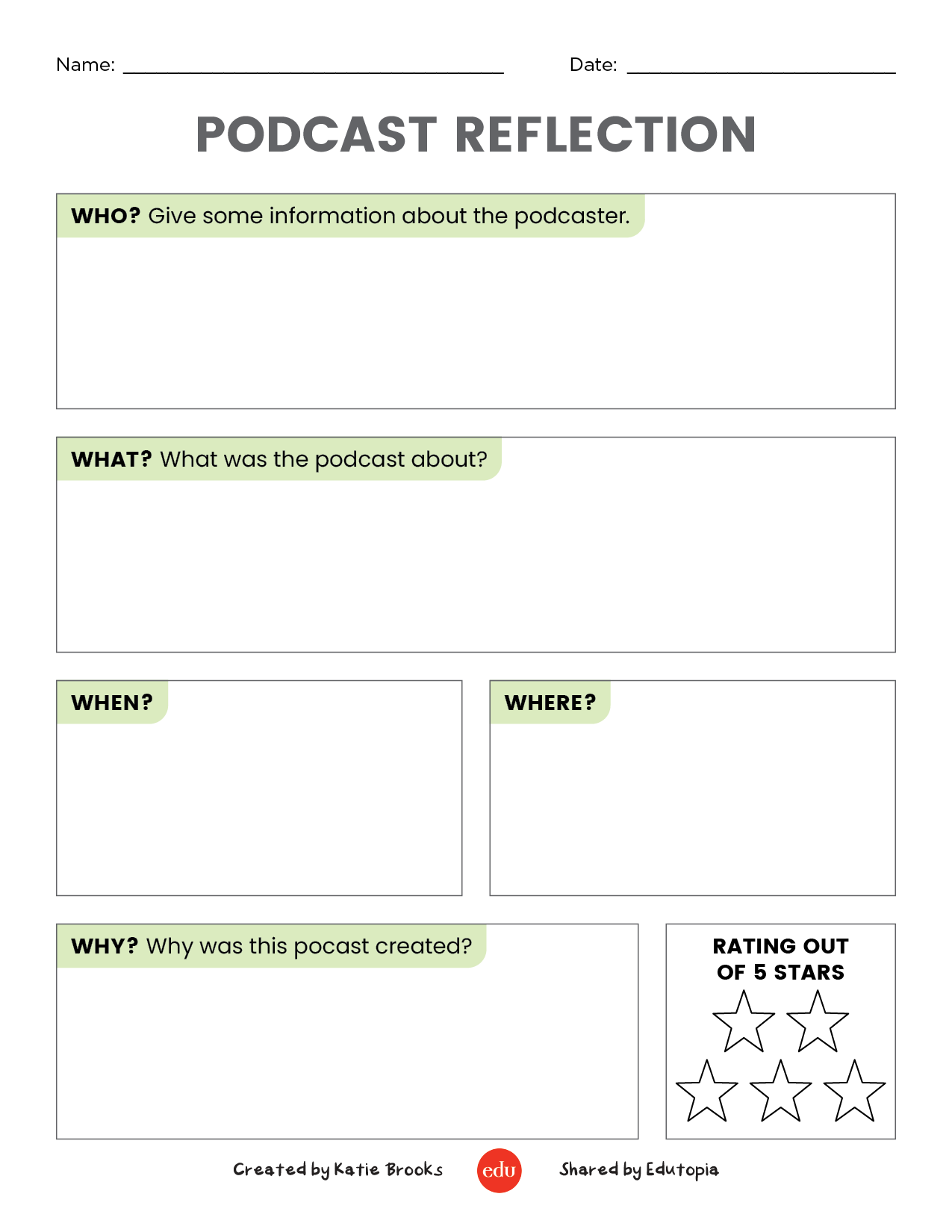Podcasting in Elementary School
Podcasts can be powerful tools for students to express their thoughts and opinions while exploring new ideas.
Your content has been saved!
Go to My Saved Content.As a fifth-grade teacher, I’ve seen firsthand how podcasts can completely change the way students engage with literacy. I started using them not just as something to listen to, but as a tool to allow students to create—and it’s been a game changer. Whether we’re analyzing podcast episodes for comprehension or producing our own podcast debates on topics like renewable energy, students are thinking more critically, collaborating more deeply, and finding confidence in their voices. Podcasts have given my students, especially those from underrepresented backgrounds, a powerful way to express themselves and connect with others. It’s one of the most engaging and empowering tools I’ve brought into my classroom.
Listening to and Analyzing podcasts
The process of integrating podcasting into the classroom can start with having students analyze episodes. My students love listening to complex concepts explained by other kids or hearing historical content brought to life, especially through podcasts like The Past and the Curious. I guide students in identifying themes, structure, and key takeaways of what the speakers are saying. I use discussion prompts to encourage critical thinking and comprehension, cultivating classroom discussions where students hear and compare multiple perspectives and ideas.
Listening to and analyzing podcasts allows students to be exposed to diverse perspectives. This cultivates empathy, critical thinking, and a broader understanding of the world. Through the podcast Circle Round, we get to listen to stories from all over the world and start to understand others. Audio-based learning supports many students who have trouble with text-based instruction. I’ve had students who listened to podcasts in multiple languages, validating their backgrounds and helping build literacy in both languages.
There are so many podcasts for every content area, but here are some favorite places to get started.
- But Why: A Podcast for Curious Kids: This answers questions kids may have about the world—including geography, history, and current events.
- Bedtime Math: These short and story-based math challenges present real-world problems that kids will want to solve.
- Mic Drop Maths: This is a very short series, but so engaging! There are eight episodes that touch on the joy of learning and solving new math concepts.
- Smash Boom Best: Debate-style podcast that strengthens argumentation and reasoning skills. I’ve done quite a few text evidence-based lessons using this one!
From Listeners to Creators: Implementing Podcasting in the Classroom
In my first years of teaching, students had to be taught about the concept of a podcast. Now that we live in a tech-driven world, students are much more familiar with the format.
Engaging with podcasts helps students share their own perspectives and use literacy as a tool for storytelling and advocacy beyond the classroom. Podcasts allow students to go beyond the traditional assignment requirements and allow for creativity, such as using music, interviews, and sound designs.
Creating their own podcasts has empowered my students to engage with classroom content. Students brainstorm topics and research their ideas to build a strong outline. Sometimes I will base podcast creation on a specific lesson, but I give my students choice and agency whenever possible.
There are several platforms where students can record, but a basic one that I find effective for elementary students is Vocaroo. It allows students to pause, download, and send links to wherever they want.
Next, we share these podcasts with the class or the school community as whole. Celebrate these voices! I’ll add links to podcasts in newsletters, make small podcasts as part of a morning meeting, and send those podcasts to parents to showcase creativity!

Podcast assignment ideas. One of the most impactful ways I’ve used podcasting was in a science lesson on renewable energy sources. I tasked students with debating the benefits and drawbacks of different types of renewable energy, presenting their arguments in a podcast-style discussion. This project combined research, persuasive writing, and speaking skills. Students took ownership of their roles—some acting as hosts, others as experts defending their energy source—leading to some of the most engaging and insightful discussions I’ve seen in my classroom. It was so fun to see their personalities come through. Some students who didn’t usually speak up in class thrived in this environment, where they could be themselves without the pressure of speaking in front of a class.
Another great way to use them in the English language arts (ELA) classroom is to do book talks or book clubs. Students read a section of a book and come together to discuss it in a podcast. The process of planning, creating, and sharing their own work through podcasting builds confidence, collaboration, communication, and even community engagement skills that will serve them well beyond the classroom.
Results. By making podcasting a part of my ELA curriculum, I’ve seen students finally comprehend complex materials, have a blast learning and using their creativity, and take ownership of their learning in a way that traditional assignments don’t always allow. Students who struggle with traditional tasks have become more invested in their learning when given the opportunity to express themselves through audio storytelling. Their research skills, confidence, and ability to articulate ideas improved dramatically. Meanwhile, high-achieving students were challenged to think more critically, resulting in deeper analytical skills and more sophisticated presentations.
Podcasting is so much more than just fact memorization or reading stories for fun. It’s about an immersive and interactive experience that encourages students to lift their voices and empower others. The power lies not in just the ability to learn and retain information, but also in the ability to inspire students—and that will ultimately transform any classroom into a place where students feel respected, seen, valued, and capable of community engagement and change.
